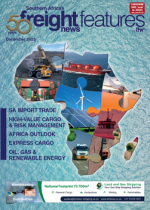Namibia is planning to extend its railway line from the northern town of Grootfontein to the northeastern towns of Rundu and Katima Mulilo on the borders with Zambia and Botswana.The project will connect the existing railway in Namibia to the Zambian railway which leads to the Zambian tourist town of Livingstone, bordering Zimbabwe. The consultants presented their final report and the Namibian government has already approved the final feasibility study of the multinational railway line. The study was conducted by M R Technofin Consultants Ltd (Canada) and co-funded by the Namibian government and the African Development Bank. The cross-border rail project aims to link new mines and mining activities to the railway network along the Walvis Bay-Ndola-Lubumbashi Development Corridor to enable transportation of minerals from the Copperbelt of Zambia and the Democratic Republic of the Congo to the Port of Walvis Bay in Namibia. This corridor is perfectly positioned to service the two-way trade between the SADC region and Europe, North and South America and emerging markets in the East.Namibian Minister of Works and Transport, John Mutorwa, said Namibia would coordinate the extension of the project that will help Namibia, Botswana and Zambia to improve trade.The proposed project is 772 km long and Mutorwa said the railway line had been deemed viable from a technical, environmental, legal, financial and economic standpoint.He added that the Namibian finance ministry was exploring options on how the funding of the project would be sourced. The Trans-Caprivi Corridor, which stretches from the Walvis Bay port to Lubumbashi in the Democratic Republic of Congo through Zambia, is considered very important by the three countries.The Walvis Bay Corridor Group said in the 2022/23 financial year that corridor cargo volumes entering and leaving the hinterland had increased by 50% year-on-year, climbing from 1 639 510 tonnes to 2 464 123 tonnes.The South African market grew 42%, from 771 852 tonnes to 1 093 569 tonnes. In addition, DRC and Zambian markets have grown exponentially by 33% and 40%.of intra-African tradein goods requiresroad transport services.90%

